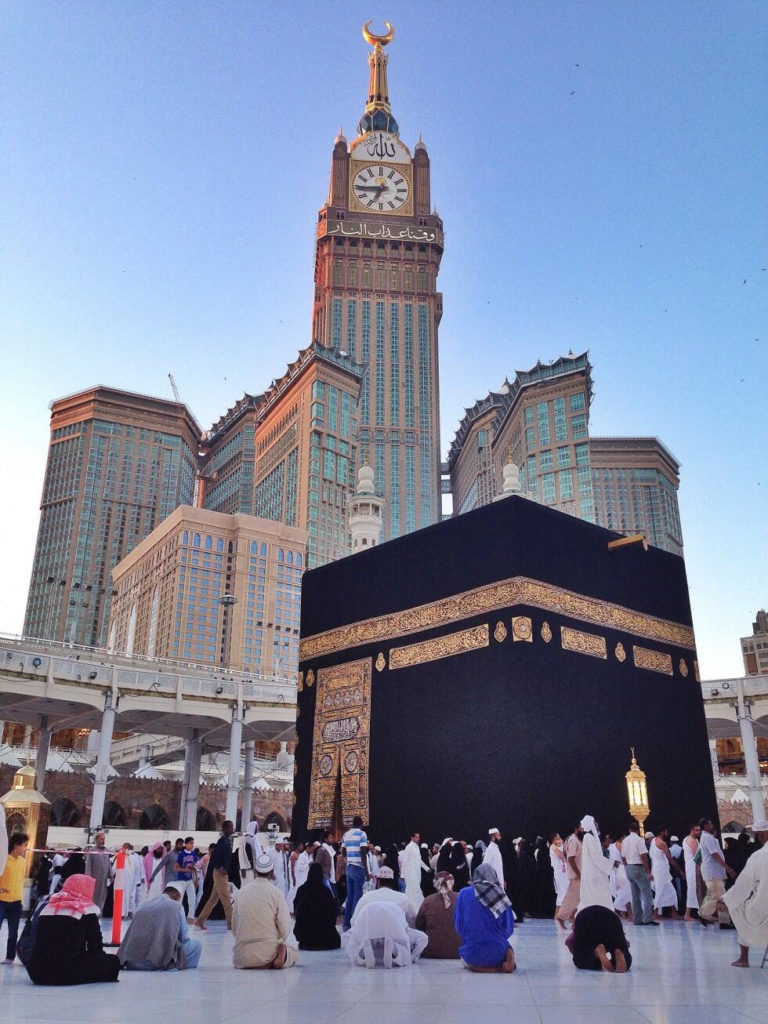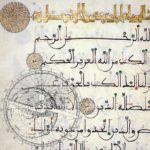
3 – The Bayt al-Māl system. Any social system needs a financial economy compatible with the needs, capacities and members of this society. When the Islamic system first emerged economic activity was conducted at the time through gold, silver, the four crops of dates, raisins, wheat, and barley, and through gold dinars and silver dirhams minted in Persia or by the Romans.
BY ALI JAWAD
THESE WERE THE PREVAILING currencies of the time when the provisions of jurisprudential dealings such as zakāt, blood money, penance, dowry and down-payments were regulated. On Muslims there were taxes that were implemented by those in control of the Bayt al-Māl (exchequer) and from these taxes they received a monthly tender guaranteeing him the means to an income and to shelter, because there were no sources of income other than agriculture and trade. The manpower numbers in these two arenas was very small compared to the general population, since there were no jobs or sizeable markets or shops, but only seasonal markets. These were fora where people offered goods, commodities and day labour. Subsequently caravans then spread to other markets and other countries, but there were no factories, labour movement, salaries or pensions.
However now, at the present time where all Islamic countries suffer from a high unemployment rate with hundreds of millions of Muslims without work or any source of income, there is no function to the work of Bayt al-Māl. On the contrary, some Islamic countries today burden their people, especially the poorer classes, with taxes that raise the prices of goods and commodities, and these Islamic countries are today operating on a principle of protecting the state’s economy from collapse, whatever the price paid by the poor.
4- Removing adornments from the houses of God
Throughout history, civilizations have witnessed changes and developments in architecture and buildings, and this is the first thing one can observe in any country, since each age and era has its own particular architectural style that sets it apart from others. We have examples of this in Islamic history, such as the ‘Abbāsid style of inscriptions or Andalusian styles in decorating ceilings, and so on. If we follow the stages of development of the most important Islamic examples – the Ka‘ba and Madina – we can see the stages of changes in the house of God, whether it be the colour of the kiswa covering or the buildings surrounding the sanctuary. Today we are witnessing a revolution in construction and reconstruction in this holy site. We can see how modernity and its aesthetics and development have changed the features of the old house and well-nigh eliminated the nobility of the sacred Islamic monument. It is entirely possible that 50 years from now there will be those who doubt that Islamic features ever existed due to the lack of material remains and the disappearance of the stone features of ancient houses under the alabaster structures and the modern marble layered over the top of them.
We can see how modernity and its aesthetics and development have changed the features of the old house and well-nigh eliminated the nobility of the sacred Islamic monument
It is for this reason that the decorations added to Islamic monuments in mosques, graves and shrines must be removed, otherwise decades from now the Islamic religion will be a matter of mere narratives, stories and tales unrelated to anything real reality and with no physical presence on the earth.
5 – Separating jurisprudence from religion
Religion is comprised of fixed texts that do not change and cannot be updated or altered, while jurisprudence is a matter of explanations and opinions that interpret religion according to intellectual jurisprudence and doctrinal beliefs. If we could teach people to differentiate between religion, which is fixed texts, and the interpretation of texts, we would have our solutions to problems generated by differences among the follows of denominations and jurisprudential schools of thought.
In short, it may be difficult to imagine or comprehend the meaning of ‘separating jurisprudence from religion’ and to simplify this idea we may mention that one aspect of the farcical situation have reached by now is that some university graduates are unable to differentiate between what is a Qur’ānic verse and what is a hadith, even though the university student can recognise a verse from a specific poet. So a correct cultural environment must first be restored in order for people to be able to understand the primary material upon which the faith is based: the text. Following this comes jurisprudence, which is the study of methods of transmission, elucidation and interpretation of the text subject to jurisprudential understanding and opinion.
So, if we style things as a mathematical equation, religion consists of two factors, the constants and the variables.
- the constants are represented by the Qur’ānic text and some of the more common hadiths;
- the variables are represented by interpretation, jurisprudence and a selection of hadiths.
The constants are the sacred element, while the variables do not partake of any sanctity and while they can achieve appreciation and respect, they cannot attain to the status of holiness, since the variables are merely human opinions and jurisprudential endeavour.
It may be possible to add some other aspects and examples to restore religion as it was at the time of its emergence. For example, and prevailing styles of clothing now differs from what was previously known; today trousers are considered to be clothes exclusive for men, and so we see Islamists preventing their womenfolk from wearing trousers because they consider this to constitute an imitation of men. This derives from jurisprudential thought which has become added to their religious intellectual heritage, given that the official dress for men in the MIddle East, the Arabian Peninsula and the Levant was the long trailing thawb. We know this from the paintings and monuments that exist that show the image of clothes without trousers.
This lays a burden on religion with something that was never part of it, for religion cannot accommodate interference in all these complex details of life
I might mention another example of clothing which has recently become stereotypical: the idea that the colour white was specific to Muslims both when fighting battles and leading their everyday lives. This image has taken root in the mind in recent decades and is connected with the image put forward by Arab film-makers – that Muslims always wore bright white clothes, although it is known that the bright white clothing in those earlier eras was considered a luxury and it was actually technically difficult to weave and manufacture cloth with this degree of whiteness. It was also very difficult to keep the colour clean and shiny under the scorching sun in the deserts of the peninsula. The clothing of the Bedouin was known for its roughness and the wearing of fabrics with bright colours was associated with the importation of textiles and goods from the regions of India and Upper Asia. It was therefore considered expensive and associated with manifestations of wealth, luxury and the soft life. Subsequently, in later eras the issue of acquiring shiny clothes of silk or cashmere was a conspicuous aspect of rich families and wealthy people, something contrary to the reality of the earliest Muslim classes, where the vast majority could not buy soft shiny clothes.
We can adduce a lot of examples here given that jurisprudence added and intervened in all aspects and details of life in order to establish the concept that the Islamic religion is a totalitarian religion suitable for every time and place. Under this conception slogans are raised in support of religion and in defense of the Islamic faith by proving that Islam includes and carries a rule for everything! This lays a burden on religion with something that was never part of it, for religion cannot accommodate interference in all these complex details of life.

Suggested Reading
Islam empowered the magistrate to give rulings for people based on the constitution that people in societies knew and agreed upon. It also authorized the doctor to treat people and prescribe for them medicine, on the basis of his experience and research, instead of treating people by means of superstitions and fake narrations presented as hadiths, such as the wings of the fly carrying both the disease and its cure, [i] or the narration of a hadith that runs “consult them [the women] and disagree with them” – a fake hadith that has no basis to it. The Prophet Shu‘ayb adopted the opinion of his daughter when she said:
“O my father! employ him, surely the best of those that you can employ is the strong man, the faithful one. [ii]
And the hadith ‘in the saliva of a believer there is a cure’ is similarly baseless. We must understand the fact that Islam is not a political system for governments that have acquired for themselves ‘holiness’ to formulate themselves upon, simply on the grounds that their mere title includes the term ‘the such and such Islamic state’!
Islam is neither a methodology for herbal medicine or for healing with talismans and spells.
It is not a sword by which people are to be slaughtered for not believing in it or its members to be persecuted just because of differences of opinion.
The Islamic Sharī‘a, which is an addendum to Islam, must be reviewed, purified and abridged, preserving the original as its real basis and differentiating it from the traditional additions of individual ijtihād endeavours. If not, some decades from today or in the very near future the Islamic religion will unfortunately be reduced to into a group of organizations, parties and political movements, or a matter of mere talismans used by charlatans and liars.
[i] This hadith is contained in al-Bukhārīs Ṣaḥīḥ: The Prophet said “If a house fly falls in the drink of anyone of you, he should dip it (in the drink) and take it out, for one of its wings has a disease and the other has the cure for the disease.” For the text see here.
[ii] Qur’ān XXVIII (al-Qaṣaṣ), 26.
Main image: The modern architectural environs of the Ka’ba, Makka.
See Part One of this essay here
